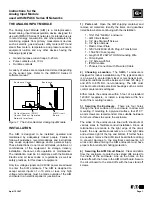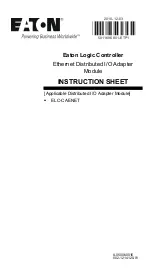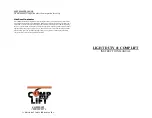
14
14
ENGLISH
4. HOW TO USE
1. Place the lifting tower over a firm and flat
surface on its working place.
2. Remove the outriggers (H) from their
transport supports (C) by releasing the plas-
tic knob (V) and pull the outrigger (H) up.
Insert them into their working position (G)
checking that they are fixed by the safety pins
(K). The longest outriggers must be placed at
the front, under the load.
3. Remove the pin (L) from the transport
plate (F) and remove the forklift (E). Turn
the winch handle (B) until the carriage (X)
has raised enough that it does not touch the
transport plate (F). Put the forklifts (E) in
horizontal position and secure them with the
pin (L).
4. Insert the outriggers (H) into their wor-
king position (G) checking that they are fixed
by the safety pins (K). The longest outriggers
must be placed at the front, under the load.
5. Adjust the lifting tower using the support
plates (J) by turning the crank (I) of the re-
gulating rod until it is level, checking the sta-
bilizing bubble level (Y) located at the base.
6. Put the load as close to the lifting tower as
possible. Do not unnecessarily separate the
sound system from the lifting tower body to
avoid overloading. See fig. 2 (page 17). Fo-
llow loading instructions. See fig. 3 (page 17).
7. Elevation: To lift the profiles, a specific or-
der must be followed. The first profile to be
raised will always be the one located furthest
from the winch. Release the safety pin (A) in
open position (T) and turn the winch handle
(B) clockwise, lifting the load until the desi-
red height. Immediately afterwards, close the
safety pin (A) in position (S), until the end of
the section has been reached. Go on succes-
sively to the different positions of each of the
profiles, until the desired height is reached. In
case the pin is hard to pull out, a small num-
ber of movements should be made with the
winch until founding the right position whe-
re the pin is released and can be pulled out
comfortably. Under no circumstances any of
the pins should be pulled with force. In case
of the lifting tower does not need to be raised
to its maximum height, it is recommended to
raise all the profiles proportionally according
to the height, and not only one of them.
8. When using the lifting tower outdoors, the
risk of wind is prevalent, for which there are
two fixing side rings (M) in the upper part
of the second profile, where safety cables
must be attached and fixed on a secure and
firm surface (never on a vehicle or anything
that can move). When wind speed exceeds
30km/h, it is mandatory to bring down the
lifting tower.
9
S
A
C
J
G
M
B
X
I
H
V
K
F
Y
E
L
U
T
Summary of Contents for AT-05B
Page 2: ...2 2 FENIX STAGE S L U Avda de los Trabajadores 24 Horno de Alcedo 46026 Valencia Spain...
Page 18: ...18...
Page 19: ...19...
Page 20: ...20...
Page 21: ...21...
Page 22: ...22...
Page 23: ...23 NOTAS NOTES LIFTING TOWERS...










































